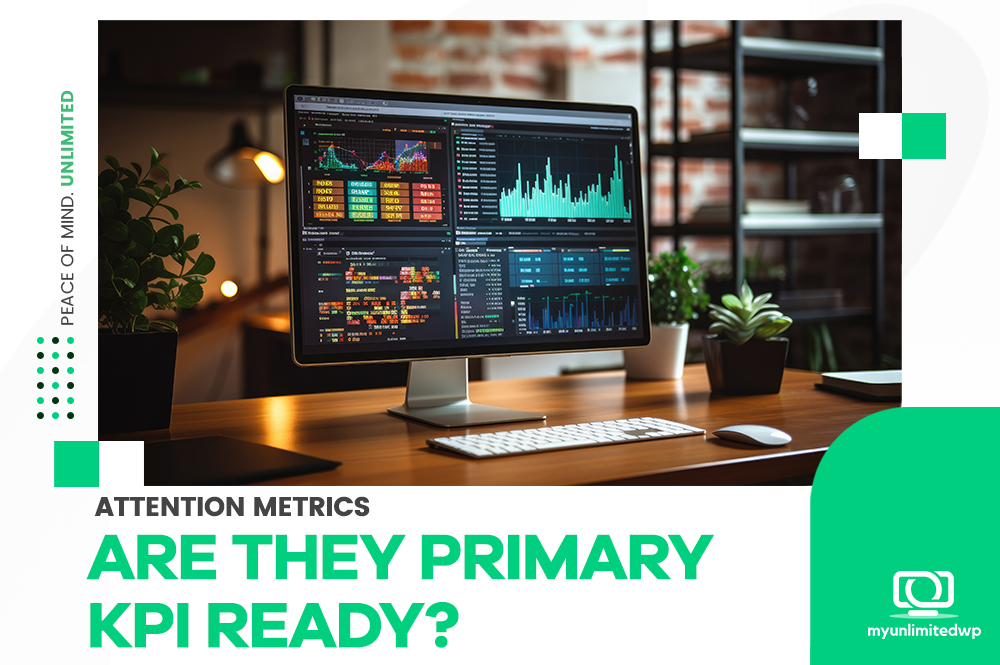Overview: Could attention metrics be the breakthrough your WordPress site needs? Explore how these advanced insights elevate user engagement, fine-tune content strategies, and much more! Let’s learn ways to make every visitor interaction on your WordPress site deeply meaningful and strategically impactful.
In the intricate world of website management, particularly within the vast ecosystem of WordPress, the relentless search for impactful Key Performance Indicators (KPIs) takes on new urgency. Among these, attention metrics have emerged as a beacon of insight, shedding light on the depth and quality of user engagement on WordPress websites.
As we explore the realm of digital marketing, a pivotal question emerges: Are attention metrics poised to become the primary KPI for WordPress support and service providers? This deep dive aims to unravel the potential of attention metrics, setting a new standard for measuring success on WordPress websites.
Understanding Attention Metrics for WordPress
At their core, attention metrics diverge from traditional engagement metrics by focusing on the quality rather than the quantity of user interactions with a website. For WordPress platforms, this translates into measuring how long visitors stay on a page, how far they scroll, their interactions with multimedia content, and even their mouse movements.
Such metrics offer WordPress service providers a more sophisticated understanding of how content resonates with the audience, providing actionable insights into user engagement beyond mere clicks or views.
Crafting Engaging Content
In the WordPress universe, where content reigns supreme, attention metrics serve as a lighthouse, guiding content creators toward more engaging, impactful creations. By analyzing which articles hold readers’ attention the longest or what type of videos are watched without skipping, WordPress content strategists can tailor their efforts to meet audience preferences, enhancing content relevance and engagement.
>> Related Reading: Winning the Attention Economy with Content Intelligence
Optimizing User Experience
The application of attention metrics extends into the realm of user experience on WordPress websites. Analyzing attention data helps identify not only which content is most engaging but also highlights potential usability issues, such as confusing navigation or slow loading times, that may be causing visitors to disengage.
Armed with this insight, WordPress website owners can implement targeted improvements, enhancing site usability and visitor satisfaction.
Revolutionizing Ad Strategy
For WordPress sites that leverage advertising, attention metrics offer a groundbreaking approach to ad placement and content. Understanding the intricacies of user attention — where on the page users focus most, how long they engage with ad content — can lead to more effective ad strategies.
By prioritizing placements that consistently capture user attention, WordPress sites can improve ad performance, driving higher engagement and, ultimately, better ROI.
Looking for ways to revolutionize your ads strategy? Here is a guide that you’ll find helpful!
Predictive Power of Attention Metrics
Beyond immediate insights, attention metrics hold the promise of predictive analytics for WordPress sites. By correlating detailed engagement patterns with subsequent actions like subscriptions, purchases, or repeat visits, site owners can forecast future behaviors with greater accuracy.
This predictive capability can inform strategies to boost conversion rates, encourage loyalty, and enhance overall site performance.
>> Related Reading: How Attention Metrics Are Defining Digital Advertising
Addressing the Challenges
The Quest for Standardization : A significant hurdle in the widespread adoption of attention metrics as a primary KPI is the lack of standardization. Various tools and platforms measure attention in different ways, making it challenging to compare data across sites or campaigns consistently. For attention metrics to gain traction, the WordPress community, including developers, service providers, and marketers, must work towards a unified framework for measurement.
Navigating Privacy Concerns : The detailed tracking required for attention metrics raises valid privacy concerns. WordPress site owners must navigate these sensitively, ensuring adherence to regulations like GDPR and CCPA while maintaining user trust. Transparency about data collection practices and offering opt-out options can help balance the need for detailed insights with respect for user privacy.
Integrating with Existing KPIs : Finally, while attention metrics offer profound insights, they should not replace other KPIs but rather complement them. A holistic approach that integrates attention data with conversion rates, bounce rates, and customer satisfaction metrics can provide a comprehensive view of website performance.
This integration enables WordPress site owners to make informed decisions, balancing quality engagement with broader business objectives.
In Summary
The potential of attention metrics to serve as a primary KPI for WordPress websites is both exciting and promising. By offering deeper insights into user engagement, these metrics can drive more effective content strategies, enhance user experience, optimize ad placements, and even predict future behaviors. However, realizing this potential requires overcoming challenges related to standardization, privacy, and the integration of diverse KPIs.
As the WordPress community continues to innovate, the adoption of attention metrics could mark a significant shift towards more meaningful, impactful digital engagement strategies, making every interaction count.
Reach out to MyUnlimitedWP for more insightful content!

